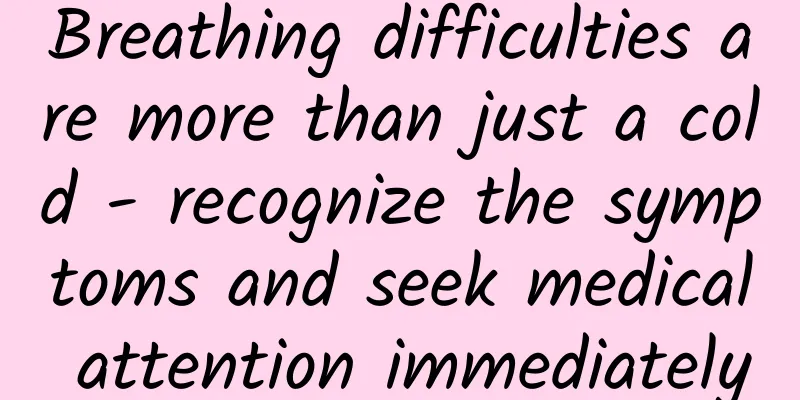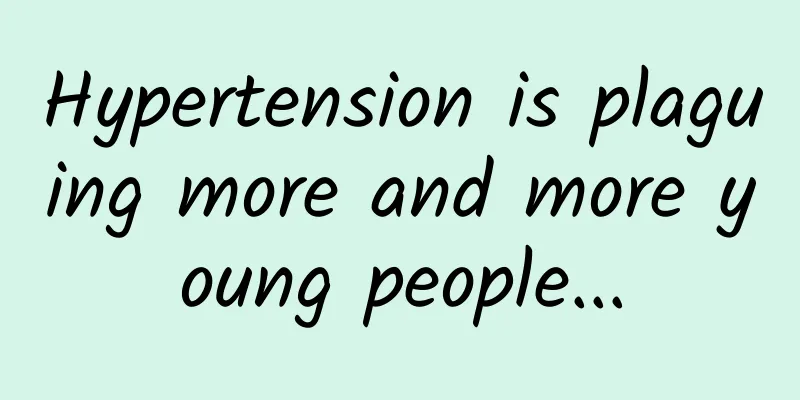Breathing difficulties are more than just a cold - recognize the symptoms and seek medical attention immediately

|
Author: Mi Yuhong, Chief Physician, Beijing Anzhen Hospital, Capital Medical University Reviewer: Chen Qiling, Chief Physician, Peking University People's Hospital Dyspnea is a common clinical symptom, which manifests as the patient's subjective feeling of insufficient air or labored breathing, and objectively, an increase in respiratory rate and depth, and even nasal flaring and typical signs of inspiratory dyspnea - the three-depression sign (obvious depressions in the suprasternal fossa, supraclavicular fossa and intercostal space), as well as hypoxia signs such as cyanosis of the lips. Dyspnea not only affects the patient's daily quality of life, but may also be an important signal of potential serious diseases. The following will deeply analyze the causes, characteristics and emergency measures of dyspnea to provide scientific health guidance for the public. Figure 1 Original copyright image, no permission to reprint The causes of dyspnea are diverse, mainly including five categories: cardiac, pulmonary, toxic, hematological and neuropsychiatric. Cardiogenic dyspnea is usually related to heart diseases, such as hypertension, coronary heart disease, congenital heart disease or hypertrophic cardiomyopathy. These diseases can cause impaired heart pumping function. When the patient is physically active, the heart cannot pump enough blood to the whole body, causing dyspnea. Particularly noteworthy is nocturnal paroxysmal dyspnea, that is, when the patient lies flat, the amount of blood returning to the heart increases, and the heart's pumping blood is not enough to pump out the excessive blood returning to the heart, so blood accumulates in the lung tissue and causes pulmonary edema, forcing the patient to sit up and reduce venous return by changing body position to alleviate the symptoms of dyspnea. In addition, patients with chronic heart failure may also experience similar symptoms, manifested as worsening shortness of breath after activity, and even inability to lie flat at night. Pulmonary dyspnea is closely related to lung diseases, such as chronic obstructive pulmonary disease (COPD), bronchial asthma, pneumonia, tuberculosis, etc. These diseases affect the ventilation and gas exchange functions of the lungs, leading to gas exchange disorders and then dyspnea. Taking chronic obstructive pulmonary disease as an example, the disease is mostly developed from chronic bronchitis or bronchial asthma. It is characterized by the gradual narrowing of the airways, which leads to restricted air flow in and out of the alveoli, especially during exhalation. If this continues for a long time, a large amount of gas will remain in the alveoli, causing emphysema, further damaging lung function, and eventually manifesting as persistent dyspnea. For such patients, even slight activities can trigger symptoms, and as the disease progresses, dyspnea may change from simple expiratory to mixed. Figure 2 Original copyright image, no permission to reprint Toxic dyspnea refers to a series of respiratory system reactions caused by inhalation of harmful substances or abnormal metabolism in the body. A typical example is carbon monoxide poisoning, where the position of hemoglobin in the body that should carry oxygen is occupied by carbon monoxide, so oxygen cannot be transported to the tissues, resulting in tissue hypoxia. The patient will experience obvious shortness of breath and dizziness. In severe cases, the patient will directly fall into a coma or even die due to brain hypoxia. Hemorrhagic dyspnea is more common in patients with severe anemia. Due to the decrease in the number of red blood cells or the decrease in oxygen carrying capacity, although sufficient oxygen is inhaled, it cannot be effectively transported to tissue cells, which also causes dyspnea. In addition, altitude sickness is also a special type of hemorrhagic dyspnea. The oxygen pressure in high altitude areas is lower, and the human body needs to adapt to this environmental change, otherwise similar symptoms are likely to occur. Neuropsychiatric dyspnea is mostly caused by emotional fluctuations. Psychological factors such as tension, anxiety, and fear can lead to hyperventilation syndrome, which is manifested by a significant increase in respiratory rate, accompanied by symptoms such as numbness of the hands and feet and chest tightness, but no organic disease was found after examination. This type of dyspnea is usually closely related to the individual's psychological state and can be relieved through relaxation training, psychological counseling, etc. It is crucial to take appropriate emergency measures for different types of dyspnea. For cardiac dyspnea, patients should immediately take a semi-recumbent position to relieve symptoms on their own, with both lower limbs drooping naturally to reduce the amount of venous blood returning to the heart and reduce the burden on the heart. At the same time, stay calm, avoid strenuous exercise, and seek medical attention as soon as possible so that the doctor can assess the condition and give targeted treatment. If dyspnea is suspected to be caused by pulmonary embolism, especially symptoms that occur after a long-term bedridden person suddenly stands up, all activities should be stopped immediately, and try to stay still to prevent the thrombus from falling off and aggravating the condition. Call the emergency number quickly for professional help. For patients with chronic obstructive pulmonary disease, bronchodilators (such as salbutamol aerosol) can be used at home when symptoms first appear to quickly relieve dyspnea, but frequent use requires vigilance for potential risks, and medical attention should be sought in time to find out the cause. In the event of an acute asthma attack, quickly leave the allergen environment, use a fast-acting bronchodilator, and go to the hospital for further treatment if necessary. |
<<: Difficulty breathing, how to give first aid correctly? Experts explain four situations
Recommend
Is the process of medical abortion painful?
The process of medical abortion is not painful, b...
Is a 60 day menstrual cycle normal?
We all know that different people have different ...
Why do girls have dysmenorrhea?
Monthly menstruation makes many female friends ve...
Chinese herbal fumigation formula for women
The benefits of Chinese medicine fumigation for w...
Pregnancy lower abdomen pain like dysmenorrhea
During pregnancy, if the pain in your lower abdom...
What should I do if wisdom teeth grow during pregnancy?
The age at which wisdom teeth grow is different f...
Why do rust spots grow on the leaves of Ficus microcarpa? How to remedy rust spots on the leaves of Ficus microcarpa
Speaking of fiddle-leaf fig, I believe many peopl...
What to do if you have pelvic effusion and lower abdominal pain
In our daily life, there are many women who suffe...
Is vaginal ultrasound painful?
Vaginal color ultrasound and color doppler ultras...
What to do about gigantic breast disease
Women are born to love beauty, and breasts are ve...
Why is the leucorrhea transparent and bloody?
Many female friends have a misunderstanding and t...
What should I do if makeup powder floats?
Loving beauty is everyone's nature, and for w...
How can the elderly prevent influenza and other respiratory infectious diseases in winter and spring?
This is the 4790th article of Da Yi Xiao Hu Winte...
What causes postpartum sciatica?
People often say that the day a child is born is ...
What does clinical diagnosis of threatened abortion mean?
We all know that there are many ways of miscarria...









